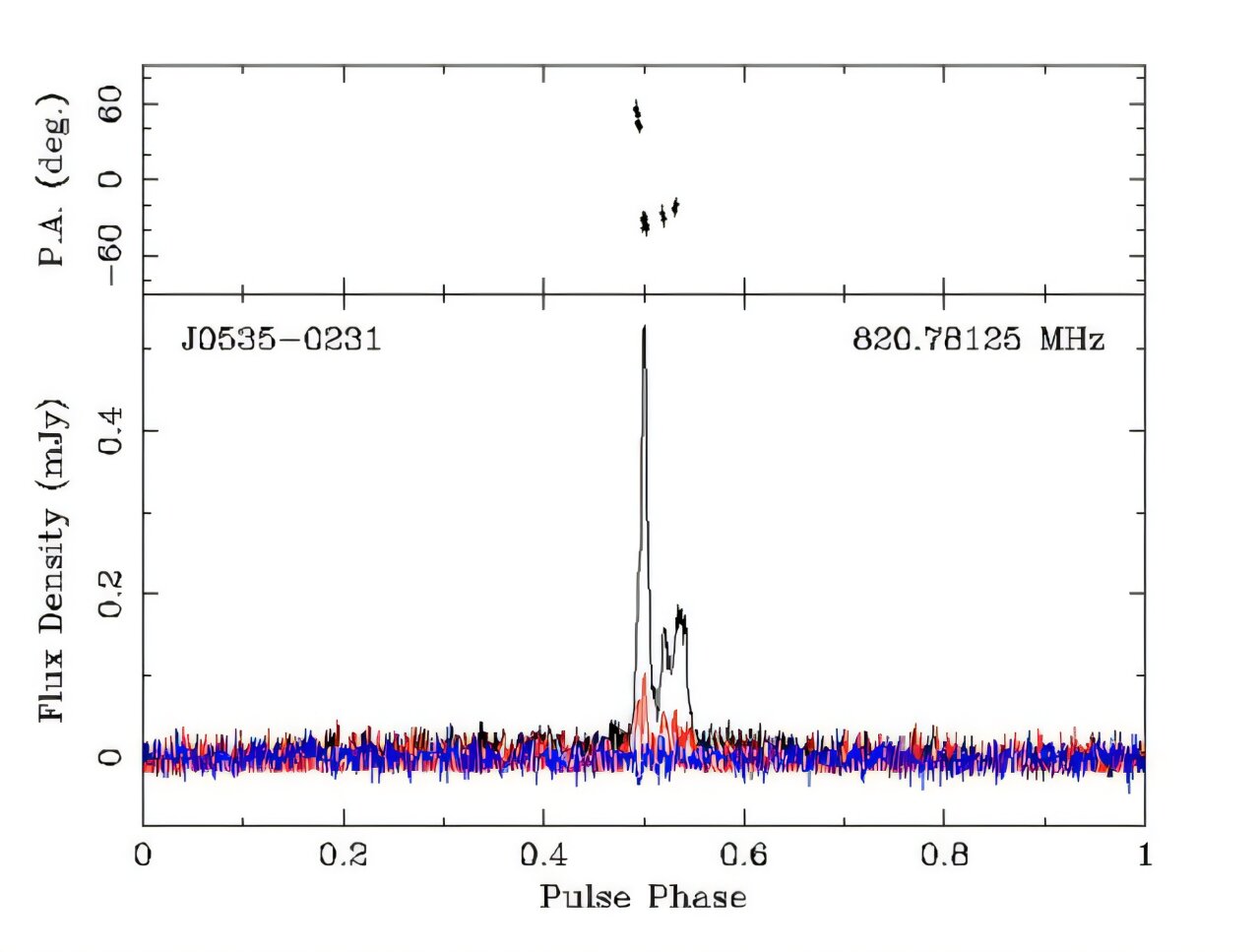Deep in the silent vastness of space, two cosmic lighthouses spin endlessly, sending out rhythmic radio pulses across the universe. These beacons—known as pulsars—are among the most fascinating remnants of dying stars, their steady flashes echoing the heartbeat of the cosmos. Recently, a team of astronomers led by West Virginia University has shed new light on two such pulsars discovered by China’s Five-hundred-meter Aperture Spherical Radio Telescope (FAST). Using the Green Bank Telescope (GBT) in West Virginia, the researchers have taken a closer look at these distant stellar remnants, uncovering remarkable details about their nature, age, and magnetic power.
Their findings, published on October 27 on the arXiv preprint server, bring us one step closer to understanding how stars end their lives and what secrets lie in the darkness between them.
The Power of Two Telescopes Working Together
When China’s FAST telescope came online, it changed the landscape of radio astronomy. Its enormous dish—spanning half a kilometer across—has already identified more than two hundred pulsars as part of the Commensal Radio Astronomy FasT Survey (CRAFTS). Among these discoveries are rapidly spinning millisecond pulsars, slower “normal” pulsars, and even a few rare transient objects known as rotating radio transients, or RRATs.
However, finding pulsars is only the first step. To truly understand them, astronomers must study how they rotate, how their signals change over time, and what their emissions reveal about their internal structure. That’s where follow-up observations with other telescopes become crucial.
Led by researcher Victoria A. Blackmon from West Virginia University, the team used the Green Bank Telescope (GBT)—one of the world’s most powerful radio telescopes—to analyze two particular pulsars: PSR J0535–0231 and PSR J1816–0518. By combining years of data from both FAST and GBT, the scientists were able to piece together detailed timing solutions and polarization profiles for each source.
The collaboration between these two instruments—one in China and one in the United States—illustrates the global nature of modern astronomy. Together, they form a bridge between continents, tuned to the same universal frequency of discovery.
The Two Pulsars: Celestial Rotors in the Dark
Each pulsar tells a unique story, written in the steady rhythm of its radio flashes. Pulsars are the collapsed cores of massive stars that exploded as supernovae. What remains is an ultra-dense neutron star—only about 20 kilometers wide but containing more mass than the Sun. As they rotate, their intense magnetic fields sweep radio waves across space like the beam of a cosmic lighthouse.
The first of the two pulsars, PSR J0535–0231, spins once every 0.415 seconds. The second, PSR J1816–0518, takes a slower 1.93 seconds to complete a rotation. These may seem like ordinary intervals by human standards, but in the realm of pulsars, every fraction of a second tells a tale of immense power.
Using the GBT’s 800-MHz Prime Focus 1 Receiver, tuned to a central frequency of 820 MHz, the astronomers measured crucial physical properties of these objects. For PSR J0535–0231, they found a dispersion measure of 117.55 pc/cm³, indicating the amount of interstellar material its radio waves have traveled through. Its rotation measure—a value that traces how magnetic fields twist those signals—was 77 rad/m².
From these and other measurements, the team calculated astonishing results: the pulsar’s spin-down luminosity—the rate at which it loses rotational energy—is roughly 3.3 nonillion erg per second. Its magnetic field strength is about 50 billion Gauss, and its characteristic age is close to 1.1 billion years.
In contrast, PSR J1816–0518 revealed a very different character. With a dispersion measure of 137.19 pc/cm³ and a rotation measure of –0.21 rad/m², this pulsar appears to be younger—only about 2.6 million years old—but far more powerful. Its spin-down luminosity reaches around 63 nonillion erg per second, and its surface magnetic field is an incredible 4.8 trillion Gauss—nearly a hundred thousand times stronger than the field of its companion.
Reading the Light: What Polarization Reveals
Pulsars do not shine in the same way as stars. Instead, their radio emissions are highly polarized, meaning that the waves vibrate in specific directions. By studying these polarization patterns, astronomers can infer the geometry of a pulsar’s magnetic field and how the emission beam changes with frequency.
For PSR J0535–0231, the scientists noticed that its trailing radio components became brighter and more polarized at higher frequencies. This kind of frequency-dependent change—called “profile evolution”—offers clues about the pulsar’s magnetosphere and the plasma surrounding it. It suggests that different layers of emission might originate from varying altitudes within the magnetic field.
PSR J1816–0518, however, behaved differently. It displayed relatively little change with frequency, indicating a more stable emission structure. Its leading component showed slightly higher polarization and brightness than the trailing one, but overall, it appeared more uniform than its sibling.
These subtle variations, though invisible to the naked eye, help scientists reconstruct the pulsar’s magnetic architecture, like cartographers mapping unseen lands.
The Hidden History of a Star: A Disrupted Recycled Pulsar
Among the two pulsars, PSR J0535–0231 stands out for another reason. Its properties suggest that it might once have been part of a binary system—a star locked in orbit with a companion. Over time, it could have accreted material from its partner, spinning up slightly before the system was torn apart, possibly by a supernova.
This type of object is known as a disrupted recycled pulsar (DRP). It represents a halfway point between “normal” pulsars and the ultra-fast millisecond pulsars that have been fully spun up by their companions. In this case, the pulsar is now isolated, its companion long gone, but its spin and magnetic field still carry the scars of its turbulent past.
If PSR J0535–0231 is indeed a DRP, it may help astronomers understand the life cycles of neutron stars and how binary systems evolve or break apart. These rare remnants are valuable cosmic fossils—evidence of ancient stellar dramas that played out millions or even billions of years ago.
Why Pulsars Matter
Beyond their individual stories, pulsars play a crucial role in modern astrophysics. Their clocklike precision allows scientists to test the laws of gravity under extreme conditions, detect gravitational waves, and probe the interstellar medium between stars. Millisecond pulsars, in particular, serve as part of a galaxy-sized gravitational wave detector known as a pulsar timing array.
By studying pulsars like PSR J0535–0231 and PSR J1816–0518, astronomers refine their understanding of how these cosmic clocks form, evolve, and sometimes malfunction. Each observation adds a new datapoint to a much larger cosmic puzzle—how matter behaves when crushed to unimaginable densities, and how energy flows through the magnetic engines of the universe.
Moreover, pulsars are time capsules. Their radiation, having traveled thousands of light-years, carries information about the history of our galaxy. The patterns in their pulses reveal how the Milky Way’s magnetic fields twist and turn, and how interstellar clouds scatter and distort signals across space.
A Symphony of Collaboration and Discovery
The discovery and study of these pulsars highlight the power of international collaboration in science. FAST, with its unmatched sensitivity, excels at finding new pulsars deep in the galactic plane, while the GBT, with its flexibility and precision, can study them in greater detail. Together, they form a partnership that transcends borders—one listening from the mountains of Guizhou, the other from the hills of West Virginia, both tuned to the faint whispers of the cosmos.
For the team of astronomers involved, this research represents years of effort—countless hours of data analysis, signal processing, and cross-comparison between instruments. But the reward is profound: a clearer glimpse into the workings of the universe’s most enigmatic objects.
The Endless Pulse of Curiosity
Pulsars remind humanity of its place in the universe. They are remnants of cataclysmic deaths that once illuminated galaxies, yet now they serve as beacons guiding our understanding of physics, time, and space. Every pulse they emit is a message from a star that died long ago, a heartbeat echoing across the void.
Through instruments like FAST and the GBT, and through the dedication of scientists who listen patiently to the faintest cosmic signals, we continue to unravel the story of these stellar survivors. In doing so, we are reminded that even in the silence of space, the universe is alive with rhythm—steady, mysterious, and endlessly beautiful.
The two pulsars, PSR J0535–0231 and PSR J1816–0518, now join the growing family of known neutron stars that speak to us through their timeless song. Each pulse carries not just data, but wonder—a reminder that the cosmos is full of stories waiting to be heard, if only we keep listening.
More information: Victoria A. Blackmon et al, Discovery and Timing Follow-Up of Two FAST-Discovered Pulsars from the FAST CRAFTS Survey, arXiv (2025). DOI: 10.48550/arxiv.2510.22910






